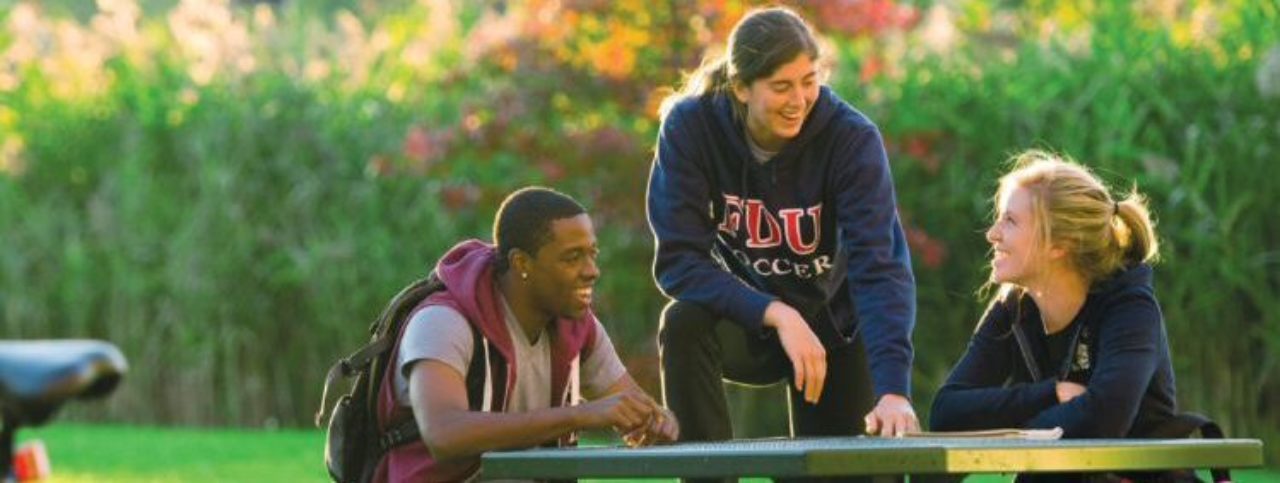Communication BA

Degree Plan
All students are required to complete the General Education Requirements (42 Credits) in fulfillment of their bachelor’s degree requirements.
Major Requirements (36 credits)
Required Courses (18 credits)
- COMM2204 Introduction to Human Communication
- COMM2102 International Communication
- COMM2861 Communicating Through Media
- COMM3101 Research Methods
- COMM4941 Senior Internship
- COMM4007 Communication Theory
Communication Electives (18 credits)
Note: Three credits in Internship Experience may be used to fulfill a Major Elective Requirement.
Concentrations
Students have the OPTION of completing a concentration within the Communication major.
Advertising Concentration (18 Credits)
(Metropolitan Campus)
This concentration is for students interested in the dynamic field of advertising. Students will learn how to develop concepts for and create advertisements. They will also learn how to reach consumers through traditional and non-traditional media, including social networks, television, radio, and print. Potential positions include advertising agency account executives, creative directors, ad buyers, as well as communication specialists for a variety of organizations.
Required (3 Credits)
- COMM2321 Advertising Principles
Take 15 credits from:
- COMM3010 Advertising and Social Media
- COMM3362 Advertising Campaigns
- COMM3348 Broadcast Advertising
- COMM3345 Advertising Copywriting and Layout
- MKTG2120 Principles of Marketing
- COMM2207 Digital Media Presentations
- COMM2206 Managing Social Media Accounts
- COMM3207 The Business of Influencers
- COMM3444 (cross-listed with MKTG 4344) Public Relations
Social Media Concentration (18 credits)
(Florham and Metropolitan Campuses)
The social media concentration is for students who are interested in exploring the impact of social media on our society as well as how social platforms are designed and how they can be utilized effectively. Students will explore how social networks’ algorithms and community standards can be crafted to have a positive social impact. They will also learn how to use social networks to build relationships with audiences. The concentration will prepare students to work as social media managers on behalf of brands and organizations as well as for a variety of positions in tech companies.
Required
- COMM 2205 The Social Impact of Social Media
Select 15 Credits from:
- COMM 2004 Principles of PR
- COMM 2206 Managing Social Media Accounts
- COMM 2207 Digital Media Presentations
- COMM 3004 Communicating in Organizations
- COMM 3006 The Power of Storytelling
- COMM 3035 Public Relations Writing
- COMM 3051 Communication and Gender
- COMM 3204 Managing Social Media Crises
- COMM 3207 The Business of Influencers
- COMM 3208 The Ethics of Social Media
- COMM 4205 The Work from Home Revolution
Human Communication Concentration (18 credits)
(Florham Campus)
This concentration is for students who wish to gain a thorough understanding of human communication and the theories that describe and explain it. This concentration is recommended for students with an interest in all aspects of human interaction or for students considering an advanced course of study.
Required
- COMM 2006 Nonverbal Communication
Select 15 credits from:
- COMM 2002 Small Group Communication
- COMM 2003 Interpersonal Communication
- COMM 2205 The Social Impact of Social Media
- COMM 3004 Communicating in Organizations
- COMM 3006 The Power of Storytelling
- COMM 3014 Family Communication
- COMM 3005 Social Media and Communication
- COMM 3023 Film and Culture
- COMM 3051 Communication and Gender
- COMM 3208 The Ethics of Social Media
- COMM 3437 Talk at Work
- COMM 4205 The Work from Home Revolution
Multimedia Journalism Concentration (18 credits)
(Florham Campus)
This concentration is for students interested in pursuing a career in the ever-changing world of journalism. Although journalism still involves the basics of researching and gathering information, today’s journalists have more tools at their disposal for delivering that information to the public: photography, blogs, podcasts, webcasts, and more. Potential positions include reporter, editor, newscaster, photojournalist, and more.
Required
- COMM 2011 Intro to Journalism
Select 15 credits from:
- COMM 2214 Intro to Broadcasting
- COMM 3012 News Writing and Editing
- COMM 2012 Intro to Television
- COMM 3004 Communicating in Organizations
- COMM 3013 Feature Writing
- COMM 3060 Television and Digital Journalism
- COMM 3204 Managing Socia Media Crises
- COMM 3207 The Business of Influencers
- COMM 3208 The Ethics of Social Media
- COMM 3248 Writing for Broadcast and Podcast
- COMM 3341 Radio Management
- COMM 3432 Sports Journalism
- COMM 3838 Media Ethics
- COMM 4444 Multimedia Journalism
Public Relations Concentration (18 credits)
(Florham Campus)
This concentration is for students interested in pursuing a career in the public relations field. The field of public relations has continued to grow and change over the last 10 years and now, more than ever, students need to enhance their knowledge and be well versed in the role that issues of globalization, ethics and responsibility now play in the field. Potential positions include publicity manager, events planner, press agent, lobbyist, strategic communication manager, and more.
Required
- COMM 2004 Principles of Public Relations
Select 15 Credits from:
- COMM 2002 Small Group Communication
- COMM 2206 Managing Social Media Accounts
- COMM 3004 Communicating in Organizations
- COMM 3005 Social Media and Communication
- COMM 3006 The Power of Storytelling
- COMM 3030 Event Planning
- COMM 3035 Public Relations Writing
- COMM 3204 Managing Social Media Crises
- COMM 3207 The Business of Influencers
- COMM 3244 Public Relations Campaigns
- COMM 3248 Writing for Broadcast and Podcast
- COMM 4480 Crisis Communication